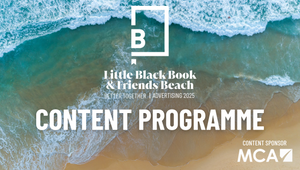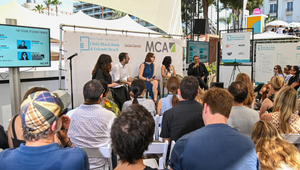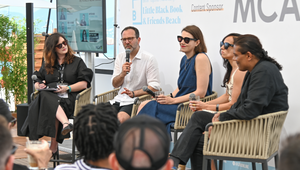
How Design Has Evolved from Sharpening Pixels to Product Strategy

“Seeing how your work is used and interpreted is the best part, even when it doesn’t go as planned,” says Colleen Miller, associate creative director at R/GA Portland. She's speaking about experience design and how to grow and learn from every project - something that she feels is vital to becoming the best designer you can be. We caught up with her about her career so far, the things she most values in her discipline and how she maintains her creative brain.
Q> Tell me about your career path. What brought you to R/GA?
Colleen> My background as a designer was a mix of working in both web and print, and after ten years in the field, I was intrigued by new graduate programs focused on interaction design and design thinking, and the possibility of focusing my career in these user-centric disciplines. I graduated with my MFA in Interaction Design at the School of Visual Arts, where I had advisors from R/GA, and I stayed in touch with some classmates and teachers who had been doing really interesting interactive work with Nike. When a position as an experience designer in the Portland office became available, I made the move with my family across the country to explore the West.
Q> What do you enjoy most about experiential design? How has it changed in the last few years, and how do you see it developing?
Colleen> As an experience designer, I like the speedy way in which you can see how your product affects the market. You can test your ideas, analyse the data, listen socially, and incorporate that feedback into your next iteration. I enjoy the way our profession has progressed into having a seat at the table for innovation-led projects. Designers are part of product strategy, helping organisations focus on what a company should invest in building and why it's important. We are no longer tasked with simply sharpening pixels at the end of a long waterfall process of business decisions.
I’ve seen our industry grow and segment itself into areas of expertise — whether you specify in Interaction/UX, visual design, research, data analytics, motion graphics, prototyping, or business strategy (or some combination of these skills), we have the opportunity to broaden our skills as designers or go deep within a discipline to create value for the organisations we work with. Designers are tasked with understanding the business value behind our decisions. Data informs, user research checks our assumptions, and we measure our success through business and engagement metrics. It’s amazing to continue sharpening your skills while simultaneously working with experts across different fields to make something better.
Q> What makes you the most excited about a project?
Colleen> Going live is always the most exciting part about a project — whether it’s a beta build, a print run, or the doors opening on an event. Seeing how your work is used and interpreted is the best part, even when it doesn’t go as planned. This is how you learn and get better. Right now we’re about to launch a new site for a big sports retailer. I’m so excited to see it go live and start tracking the changes. The cyclical process of identifying problems, brainstorming solutions, prototyping, and developing for release is really rewarding.
Q> What have been some of your biggest growth moments?
Colleen> Stretching into areas where you see an opportunity to make a difference. Whether it is by mentoring other designers, finding a mentor yourself, exploring new processes, even making the mistakes required to test those theories—these moments when you are proving that you can add value are the growth moments. My biggest moments of growth have been taking a career “break” to attend grad school later in my career; seeking a position at a company I really wanted to work for (Food Network) and asking directly; taking a big risk to move to a new city and go “agency-side.” I’m growing daily by surrounding myself with people way smarter than I am, proving my worth daily by experimenting and challenging my assumptions and ways of working to adapt to the speed of culture that keeps us relevant in our industry. '
Q> How do you nurture and maintain creativity?
Colleen> Rest. The best way I have found in this long career to stay creative is to drive hard when you are in the zone — sketch frantically, obsess over the details, and share your work with collaborators early and often. But in order to maintain the ability to keep coming back strong, you have to refuel your mind and body with periods of rest, be it through sleep, walking outdoors, reading, or a long weekend vacation. Everyone has their own ways of incorporating downtime and that is what readies your mind for the next bout of creativity and problem-solving. It is hard to be a burned-out designer, and it is hard to work with burned-out designers. Rest!'
Q> Do you have any passion projects outside of work?
Colleen> Outside of work, I spend most of my time focusing on being a mom and hacking my health and well-being by cooking most of our food from scratch and functional fitness. From a creative perspective, my partner still manages a successful design studio that we started over ten years ago. As more of a non-silent silent partner (he runs the business and I chime in with some hand-drawn sketches and lettering from time to time) it’s fun how we have both grown and contributed as designers along different paths.















